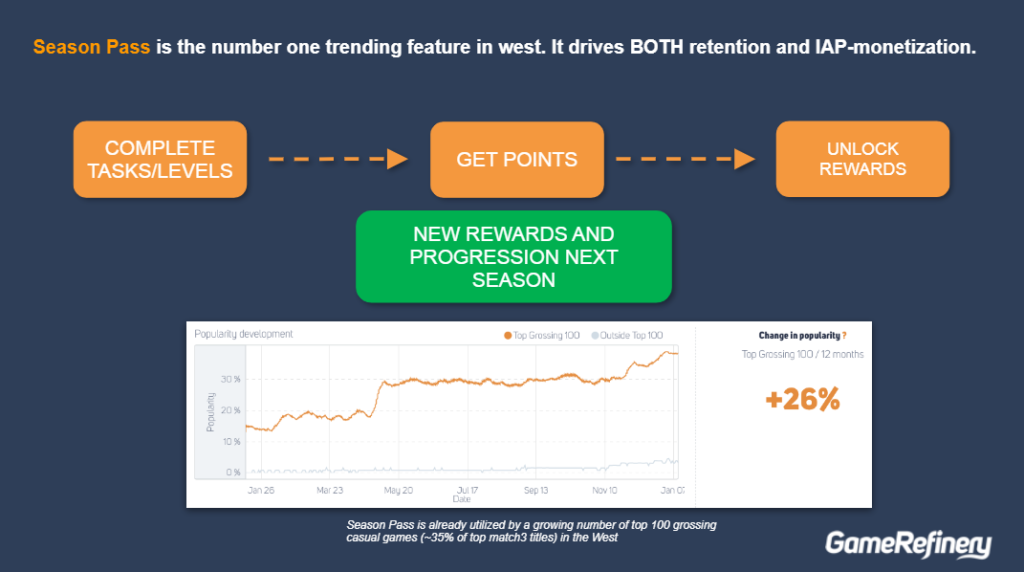As the mobile games market matures, the introduction of meta mechanics into casual games is becoming an increasingly common practice among Western developers. Typically, devs add collectibles, customization, RPG elements, and a narrative layer.
This is coming from Kalle Heikkinen, chief game analyst at GameRefinery, who spoke on the subject at WN Winter’21.
Kalle Heikkinen
According to Heikkinen, the trend towards hybridization is at its most tangible today. Previously common for hardcore and midcore projects, meta elements are becoming commonplace for casual titles as well. The analyst calls these titles (casual core experience plus meta mechanics) hybrid games.
Here’s the most widely used meta elements:
- collection — collecting items or characters without affect the core gameplay;
- RPG mechanics — the development mechanics enhancing characters and items;
- light customization / construction — mechanics that allow you to change how characters and environments look, which has zero or minimal effect on the core game;
- narrative elements — integrating a story into the game to stimulate engagement and sense of progress.
Collection meta layer has been by far most popular in the West, according to GameRefinery. Over the past two years, the share of games using this meta layer has grown from just over 20% to 65% in the US top grossing games ranking. This is because collection mechanics are easy to integrate into any game: they do not require siginificantly changing the core experience.
When asked why add meta elements to casual games at all, Heikkinen replies as follows:
meta mechanics can provide additional, deeper experience, which modern gamers are increasingly expecting, including from casual projects;
meta mechanics add an additional monetization layer to the game, sometimes without even affecting the core;
meta mechanics give players new targets, thus increasing retention.
While it is possible to integrate meta mechanics into a game with almost any core, the key to success is finding the right mix of meta elements and the core experience. As one of the examples, Heikkinen cites Coin Master, which combines the slot (casino) core gameplay with collection and light construction.
But it’s not just these four types of meta layers that are trending in casual games. Social mechanics are also growing in importance. These elements have usually been limited to sending hearts, emojing and visiting other people’s farms / cities. Today, however, deeper social features are becoming relevant. According to GameRefinery, 50% of the top match-3 games in the US currently have team mechanics. This is a 23% increase from the previous year.
And, of course, when it comes to the trending features, Season Pass deserves a special mention. The mechanic made popular by Fortnite is becoming more common in casual games. Over the past year, the number of casual games with season passes in the US top grossing games ranking has grown 26%.
According to Heikkinen, adding the above mechanics can boost both retention and IAP monetization. In some cases adding them does not even require changing the core game. Although, of course, it’s important not to upset the game’s balance (a large number of free rewards in exchange for progression will definitely have a negative effect on monetization).
The analyst also shared the percentage distribution of other popular meta mechanics in the top 20% of games:
- gachas (loot boxes) — 65%;
- incentivized video ads — 75%;
- limited time IAP offers — 97%;
- piggy bank — 32%.






